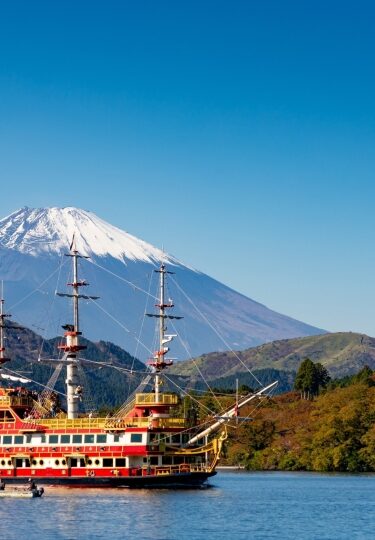While there’s no end of interesting things to do in Japan’s capital, the best day trips from Tokyo offer even more options. From scenic countryside to hot springs and ancient temples, there’s a wide choice of sights.
The port cities of Yokohama and Yokosuka were vital in opening up Japan to the outside world. Narita, famous for its airport, is also home to a 1,000-year-old temple.
On Mt. Takao, you can go hiking; in Chichibu, you can try ziplining or bungee jumping. The three shrines of Enoshima island are more sedate, while Kawazaki’s Warehouse is a temple to computer games. Take your pick, then, of exciting Tokyo day trips.
Yokohama
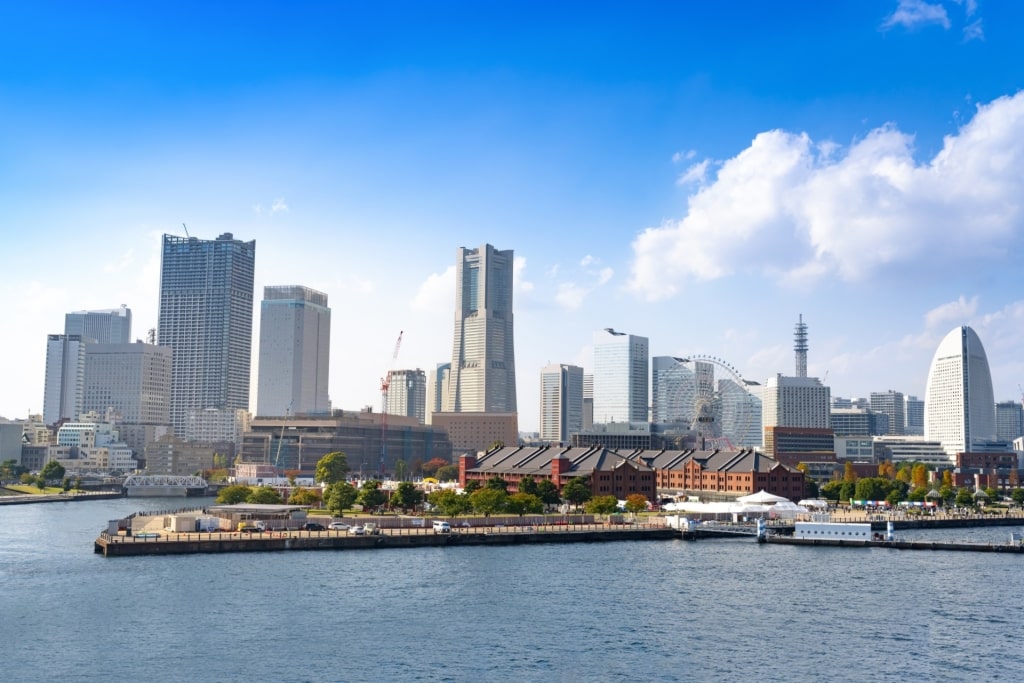
Yokohama
The lovely Japanese city of Yokohama is less than an hour from Tokyo on the Shinkansen high-speed rail. The city boasts Japan’s largest Chinatown, a reminder of its importance as a port.
Find out more about that history in the Yokohama Port Museum. Photographers will love the Nippon Maru, a beautiful old sailing ship moored outside.
This harborfront is part of the central business district, Minato Mirai 21, with its futuristic architecture. The view from the 972-ft-high Yokohama Landmark Tower takes in Mount Fuji on clear days.
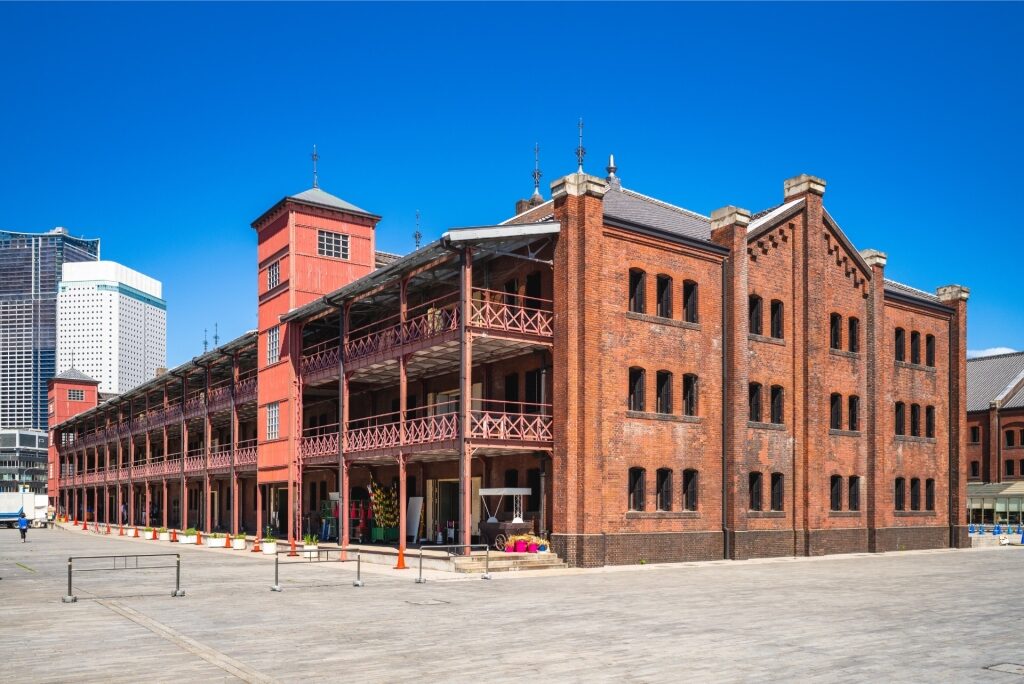
Red Brick Warehouse, Yokohama
At the sprawling Red Brick Warehouse, a renovated old customs building, you’ll find shopping and dining. Don’t miss the quirky CupNoodles Museum if you are a fan of instant noodles.
For an unusual souvenir, search out merchandise from the Yokohama DeNA BayStars. This professional baseball team plays out of Yokohama Stadium.
Read: Beautiful Places in Japan
Kamakura
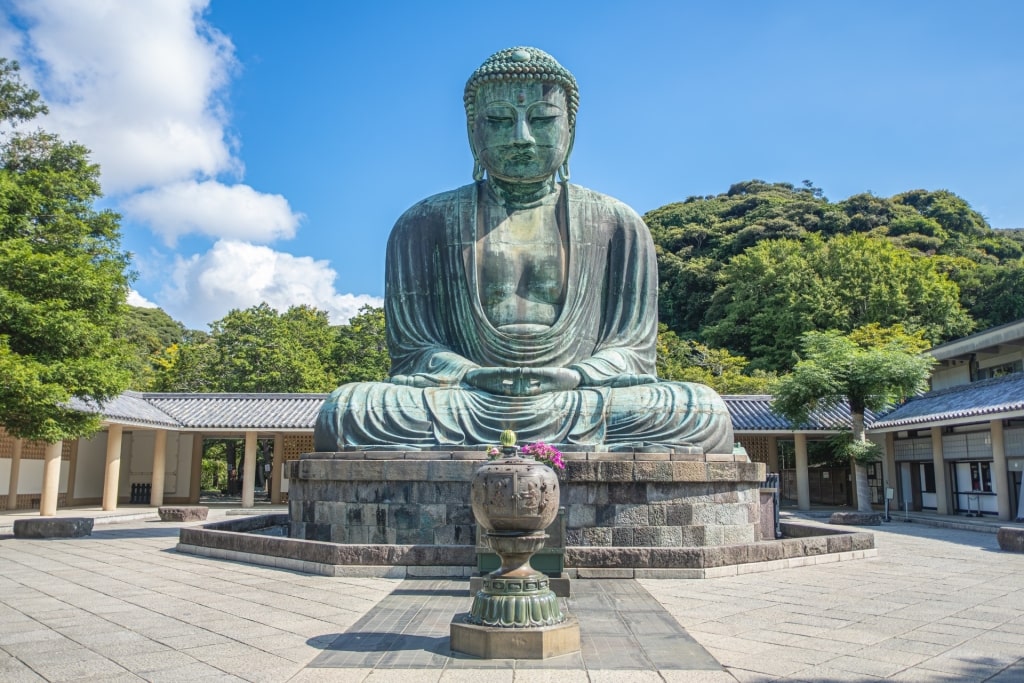
Great Buddha in Kotoku-in Temple, Kamakura
Kamakura is most famous for its Great Buddha—Daibutsu—in Kotoku-in Temple. Dating to the 13th century, this 33-ft-tall bronze statue is the country’s third largest, yet still remains one of the best places to visit in Japan off the beaten path.
Kamakura’s many shrines and temples might remind you of Kyoto. From the Daibutsu, you can walk to the serene Jochi-ji, one of five famous Japanese temples here.
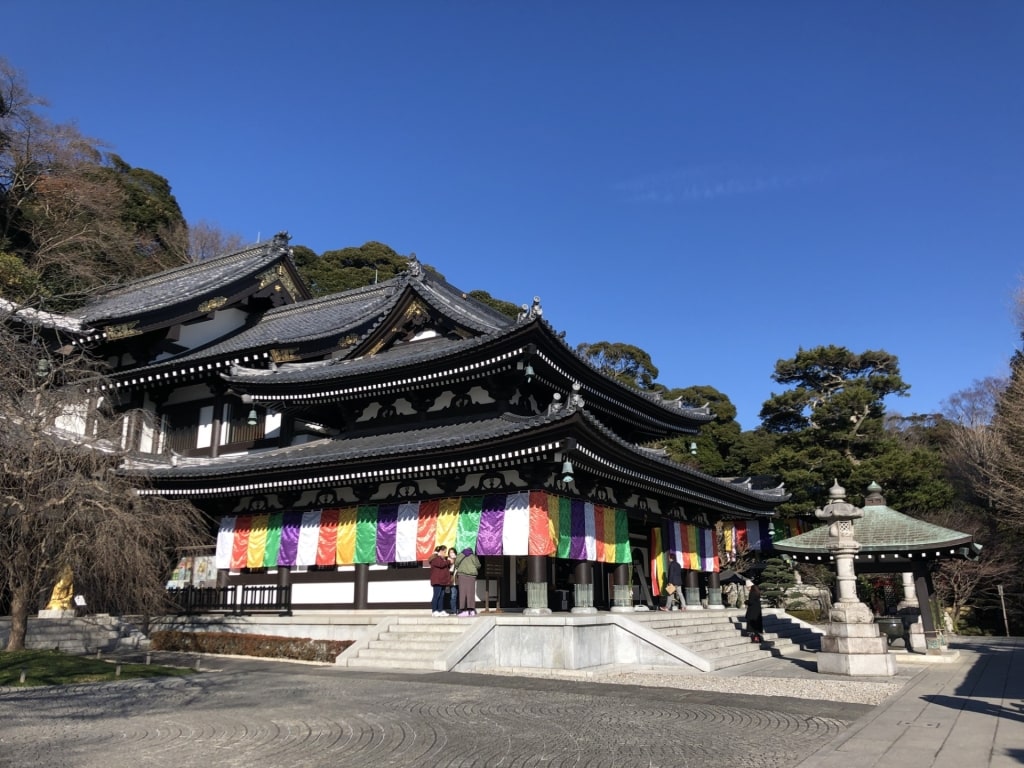
Hase-dera Temple, Kamakura
Hase-dera Temple, with its 11-headed Kannon statue and beautiful gardens, has wonderful sea views. Tsurugaoka Hachimangu is an impressive Shinto shrine with equally lovely grounds.
This last stands at the top of Komachi-dori shopping street, running down to the waterfront. Walk it to browse for souvenirs and sample local food.
The most unusual shrine is Zeniarai Benten Shrine, where you can wash your money in a sacred spring. This is said to bring more money, so it’s very popular with businesspeople.
Enoshima
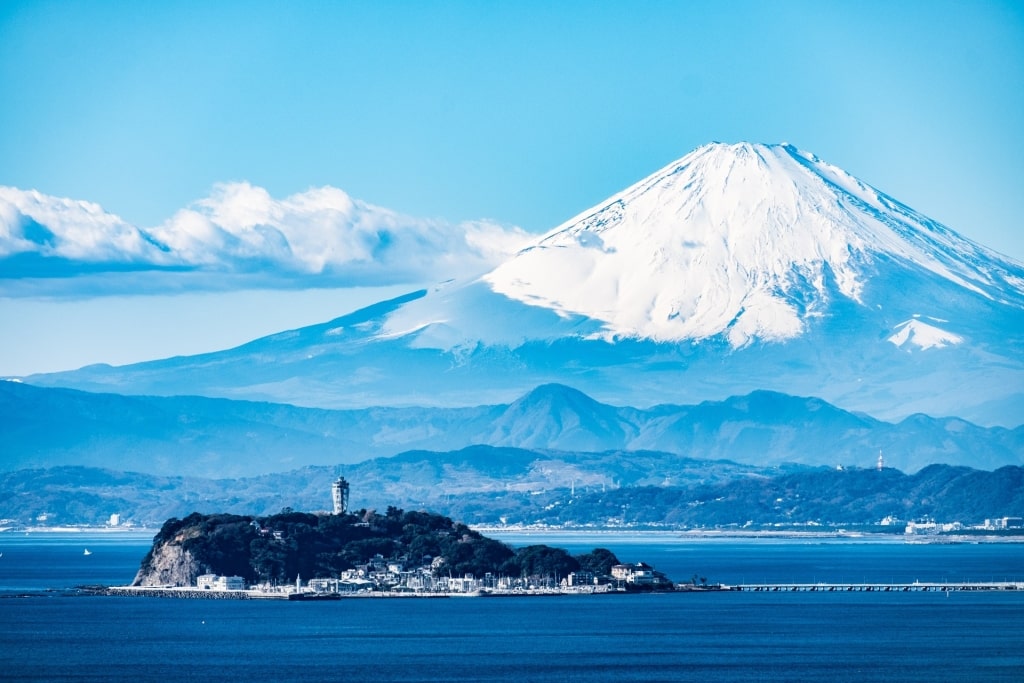
Enoshima
The small island of Enoshima is a popular destination with Japanese people for its three shrines. Dating back to 552, they are dedicated to the goddess Benzaiten, a deity associated with water.
Benzaiten became linked to the arts, good fortune, and lovers. That wide appeal made Enoshima a popular day trip from Tokyo as far back as the 17th century.
Therefore, there are plenty of shops, restaurants, and entertainment. Stroll along Benzaiten Nakamise Street to buy Japanese souvenirs or taste whitebait, a local specialty.
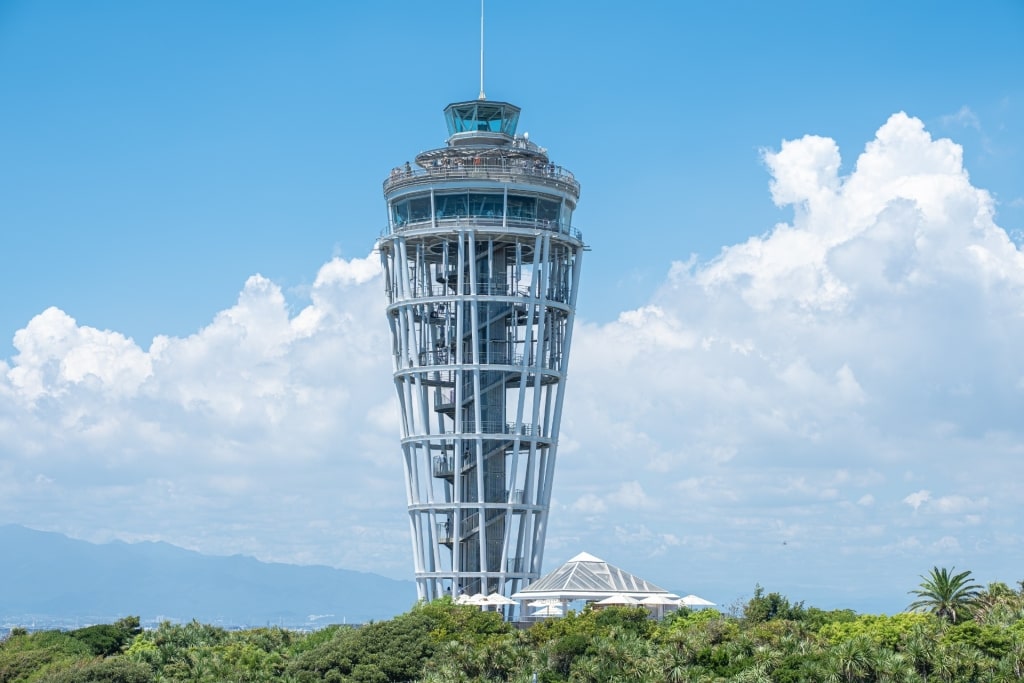
Sea Candle, Enoshima
The Sea Candle is a lighthouse with panoramic views of the coast and Mount Fuji. The Samuel Cocking Garden is a beautiful botanic garden, great for strolling.
Finally, climb up to the last shrine—sadly not wheelchair-accessible—and you’ll see Hadaka-Benzaiten, of ”Naked Benzaiten”. Modestly shielded by her lute, in this form she is the goddess of artistry, music, and wisdom.
Kawagoe
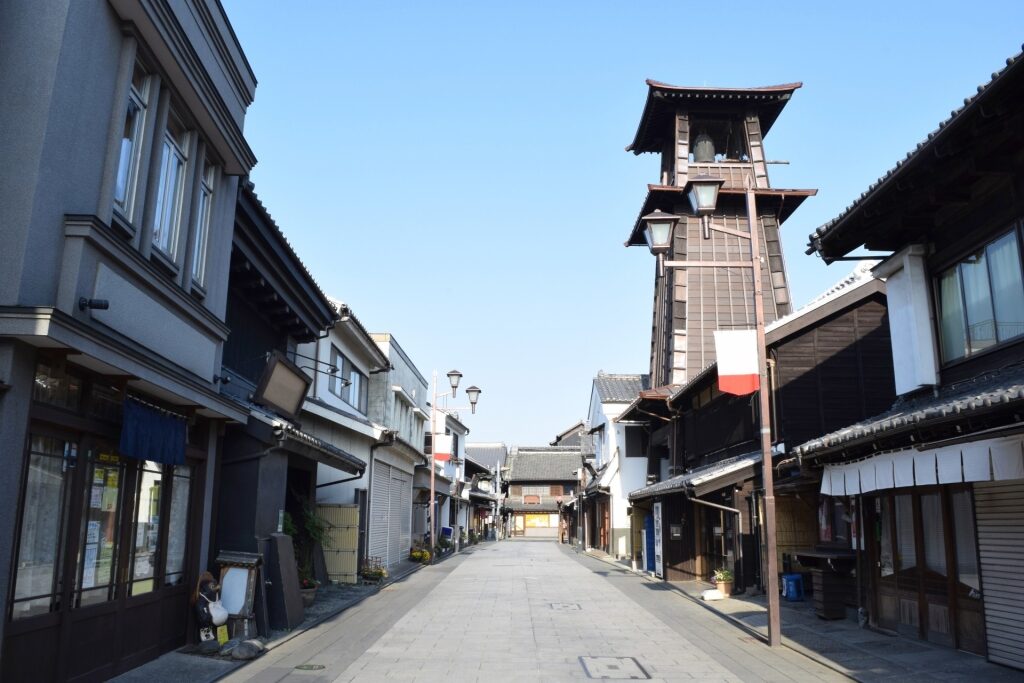
Kawagoe
Under an hour from Tokyo, Kawagoe stands out for its traditional architecture and wooden bell tower. This being Japan, it’s also known for its sweet potatoes and candies.
The Toki no Kane—“Bell of Time”—is a wooden bell tower dating back 400 years that chimes four times a day. It stands in the Kurazukuri Warehouse District, many of whose traditional clay-walled buildings are now shops or restaurants.
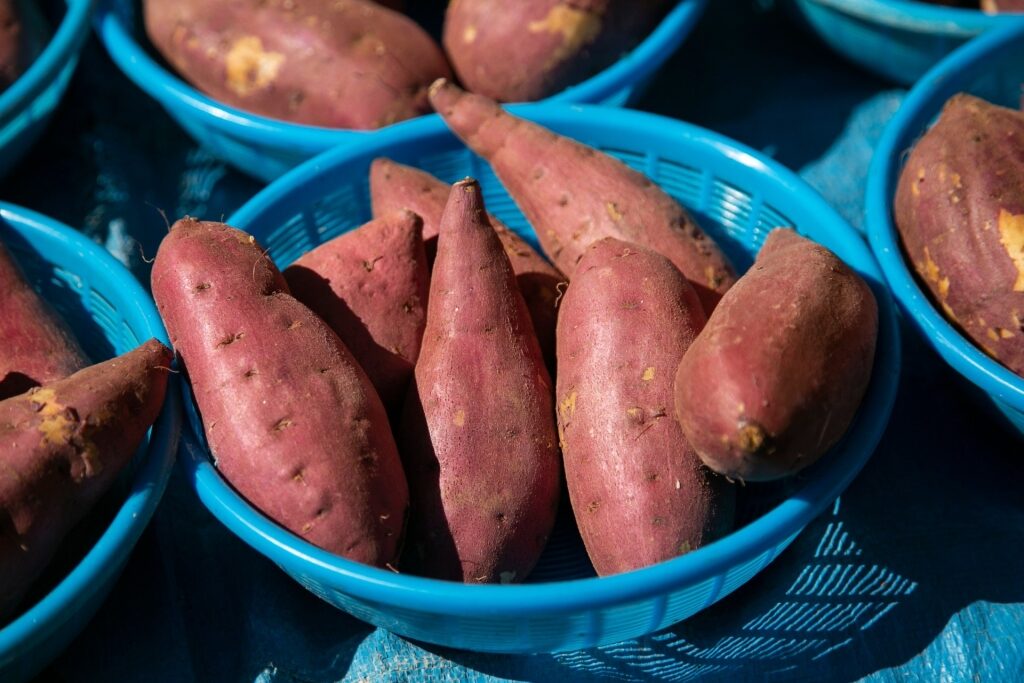
Yaki-imo
You’ll find sweet potato—yaki-imo—served in everything from coffee to ice cream. You can taste the city’s equally famous candies in the sweet-smelling Kashiya Yokocho, or “Penny Candy Alley”.
Kawagoe is also known for traditional Japanese crafts such as dolls and papier-mâché. The Coedo Brewery produces craft in the form of beer from traditional Japanese ingredients.
Among several major temples, Kitain is significant as a last remnant of the original Edo Castle. Hikawa is a peaceful Shinto shrine, known for its “love” stones and beautiful grounds.
Narita
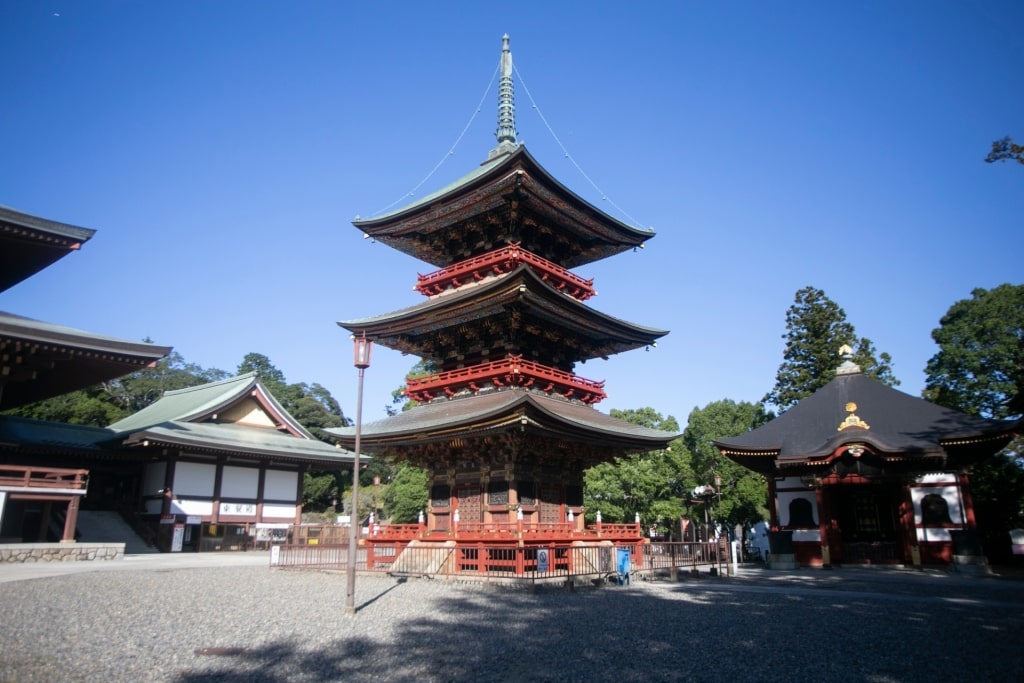
Naritasan Shinsho-ji, Narita
Well known for its ultramodern airport, Narita has a perhaps surprising number of traditional sites. The greatest is the 1,000-year-old Naritasan Shinsho-ji, a vast Buddhist temple sitting in a peaceful park.
The temple is approached along Omotesando, a long street lined with restaurants and stores. For many centuries, it has been selling pilgrims local dishes and traditional crafts that Japan is known for.
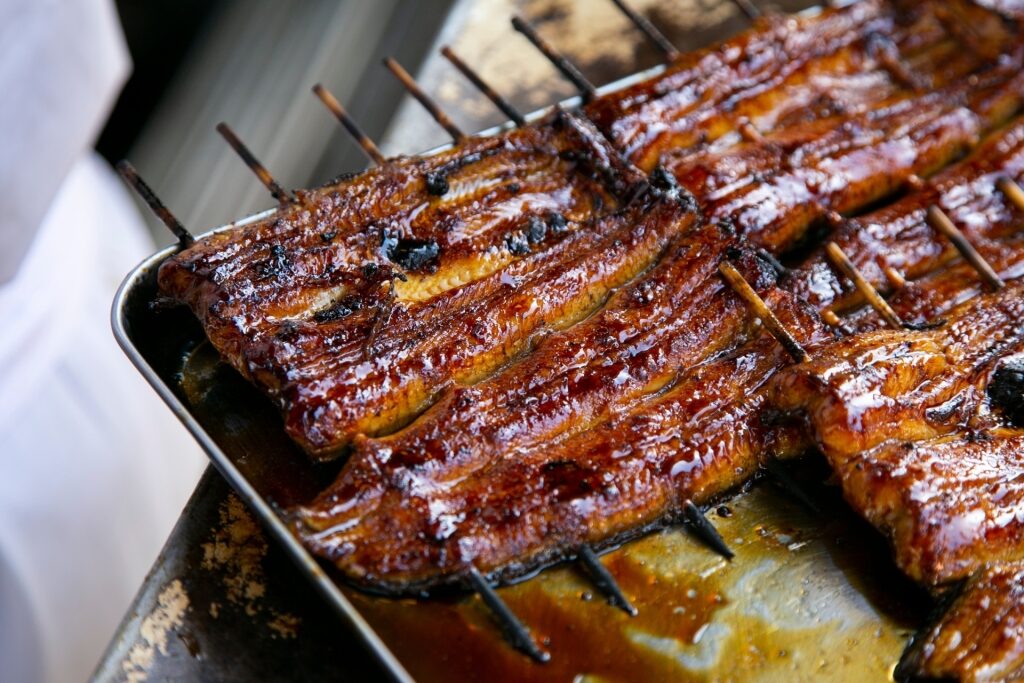
Unagi
The local speciality is eel—unagi—and the street has some 60 places selling it. The traditional flavoring is sansho, a type of pepper with a hint of citrus.
A must-see in Narita for Japan-lovers is “Rekihaku”, the National Museum of Japanese History. Full of interesting artifacts, it takes you from the prehistoric era to modern Japan, with audio guides in English available.
Mito
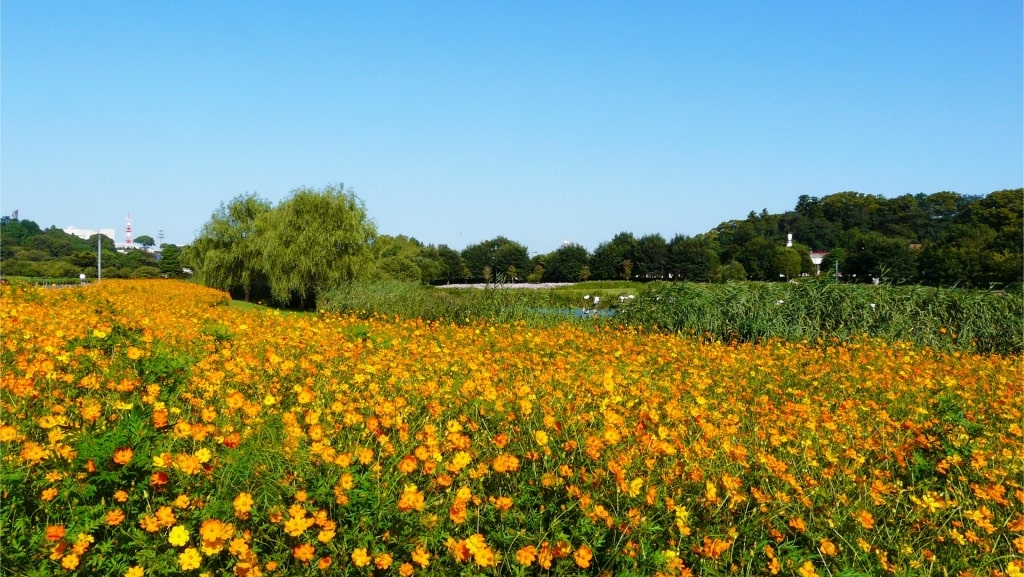
Kairakuen Garden, Mito
Mito is a destination for Kairakuen Garden, one of the top three landscaped gardens in Japan. It’s especially popular during plum blossom season, but its paths, lined with bamboo groves, are lovely year-round.
A must-see here is the Kobuntei, a traditional wooden villa. It was designed to give panoramic views of the garden and nearby Senba Lake.
In complete contrast is Art Tower Mito, a contemporary art space. Look out for its rotating exhibitions and the distinctive metal tower with great city views.
You can see more art at the Museum of Modern Art, Ibaraki, on Lake Senba. There are works by the likes of Manet and Renoir, as well as major Japanese names.
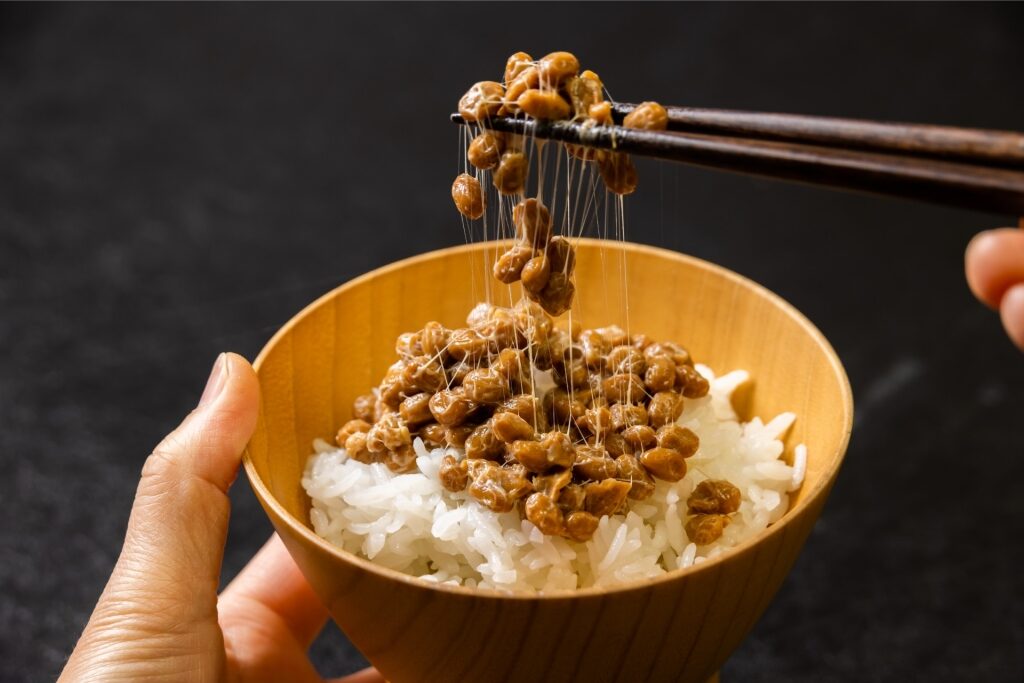
Natto
The local culinary specialty is natto, sticky fermented soybeans typically eaten over rice for breakfast. Try the wara natto, with the natto wrapped in rice straw.
Odawara
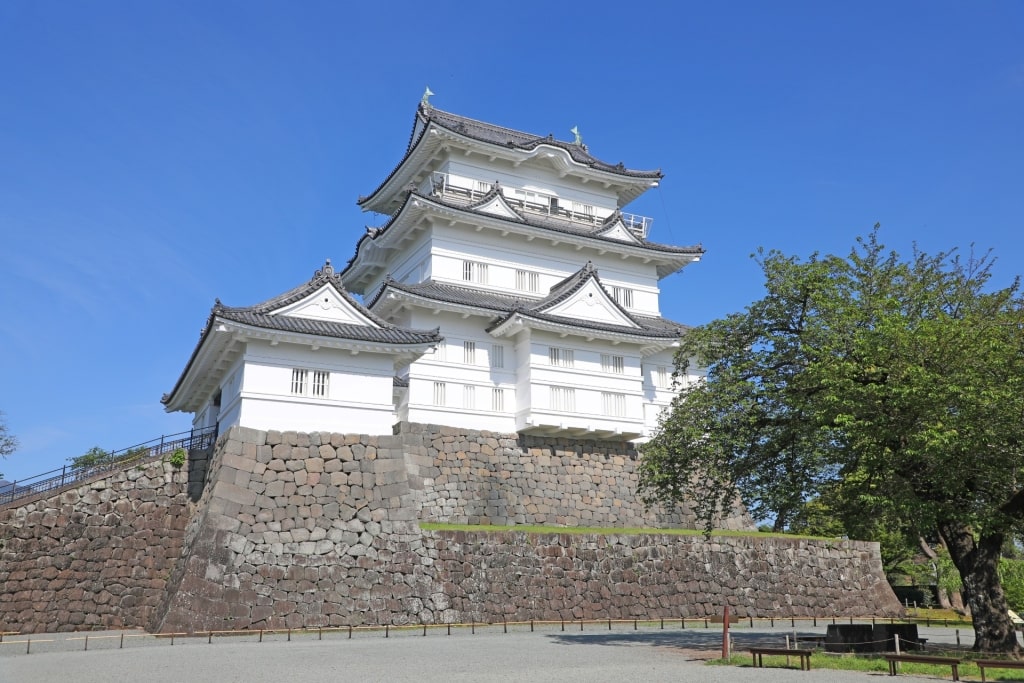
Odawara Castle
Odawara stands on Sagami Bay, just over an hour southwest of Tokyo. Take in the views of the bay from the beautifully restored Odawara Castle.
The museum in the castle showcases samurai armor, weapons, and other artifacts. A more peaceful vision is found in the castle grounds and the nearby Ninomaru Garden.
Hotoku Ninomiya is a shrine near the castle dedicated to a famed scholar. His statue as a young boy, working while reading a book, can be seen at many Japanese schools.
Odawara is noted for its fishcakes and there is even a museum dedicated to them. At the Suzuhiro Kamaboko Museum, you can try making your own.
Follow the fish to Hayakawa Fishing Port, full of boats. Or take a coastal walk at Odawara Beach.
Read: Best Beaches in Japan
Sawara
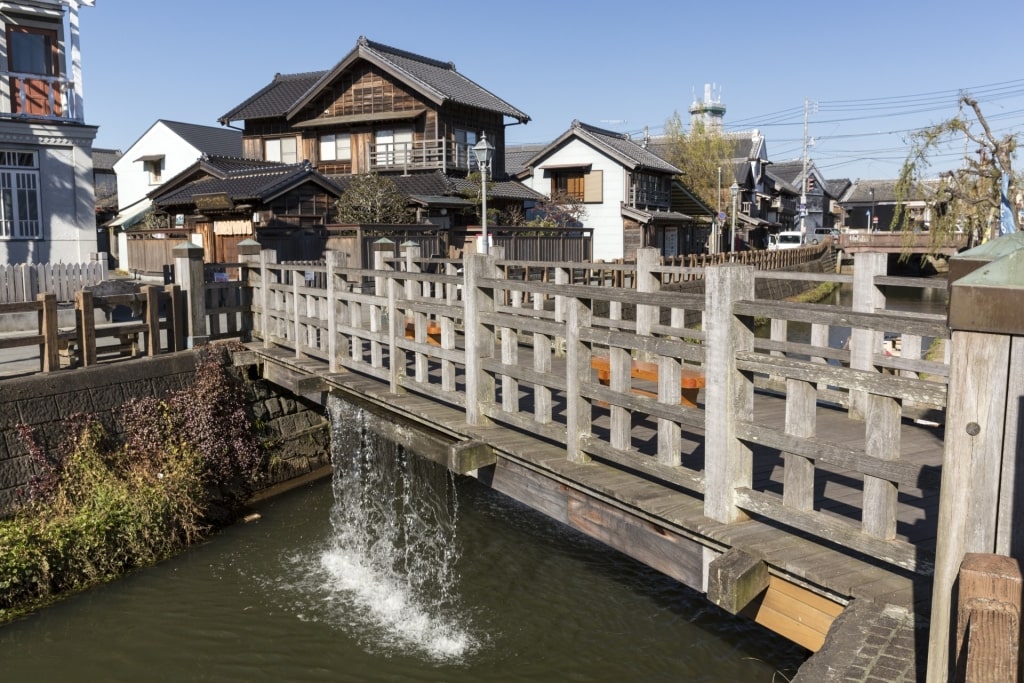
Sawara
Sawara, 30 minutes east of Narita, is often called “Little Edo” for its authentic historic atmosphere. It’s best appreciated on a canal tour by flat-bottomed boat.
During the Edo period from 1603-1867, Sawara was an important hub for shipping rice. Many of the merchant houses, warehouses, and canals date back to that era.
Visit a tea house for a break and browse shops selling traditional crafts and candies. A highlight is the Ino Tadataka Museum, dedicated to the cartographer who drew the first accurate map of Japan.
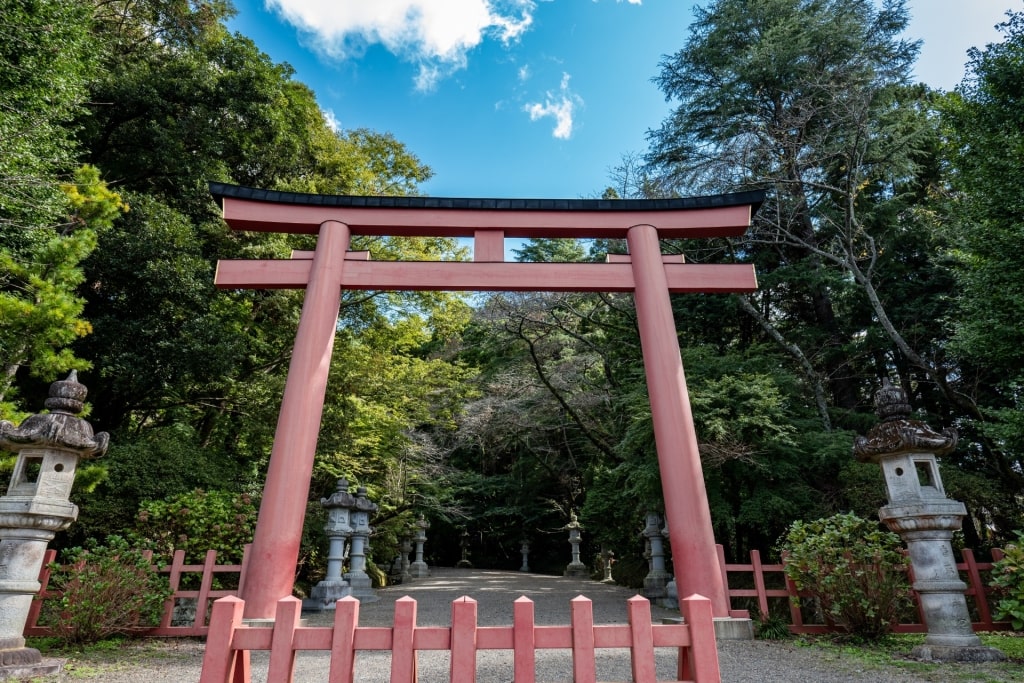
Katori Jingu, Sawara
Nearby is Katori Jingu, one of the oldest Shinto shrines in Japan, established in 643 BCE. Many of its buildings date to a rebuilding in 1700.
North of the Tone River is Suigo Sawara Ayame Park, which has 1.5 million irises, in full bloom during the month of June You can also walk through a tunnel of wisteria and in August, see 300 species of lotus.
Chichibu
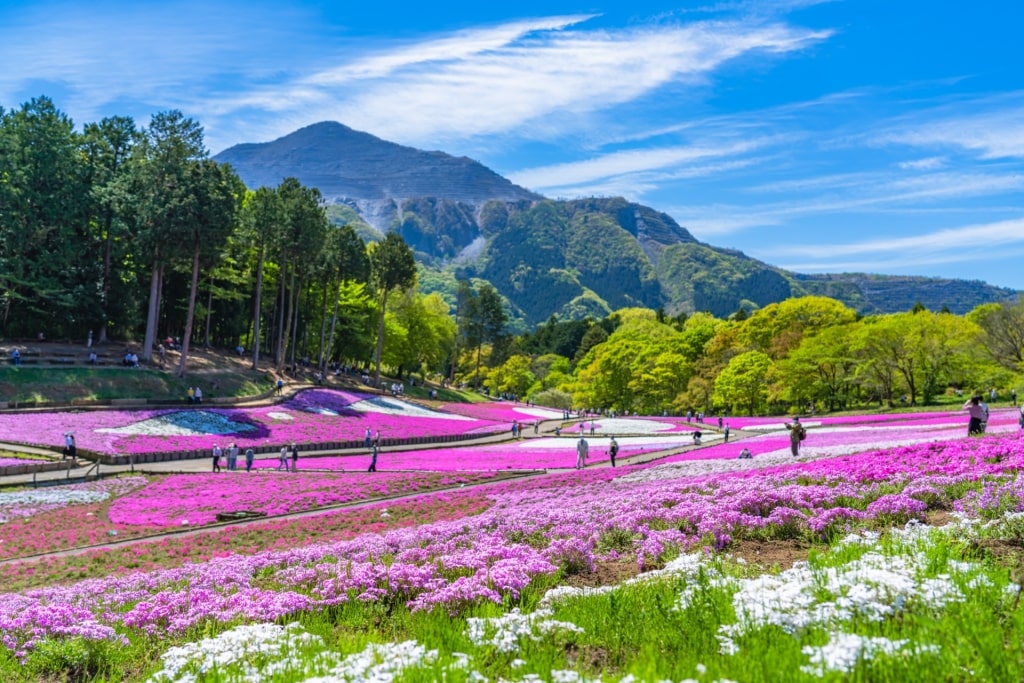
Hitsujiyama Park, Chichibu
Chichibu is best known for its Night Festival in December, with ornate floats and splendid fireworks. It’s associated with Chichibu Shrine, which has been bringing visitors here for generations.
Sitting amid the Nagaonekyuryo mountains in Japan, Chichibu is also a place to explore nature. Chichibu Muse Park shows off the best of it and can be explored on foot, bike, or in the Sky Train.
In spring, Hitsujiyama Park is a photographer’s dream with its fields of shibazakura, or pink moss. Chichibu Geo Gravity Park is a marked contrast with its adrenaline-pumping skywalk, canyon swing, zipline, and bungee jumping.
In the traditional shopping street of Banba Dori you can try local dishes such as miso potato. Soba noodles, sake, and whisky are other local specialities.
Hakone
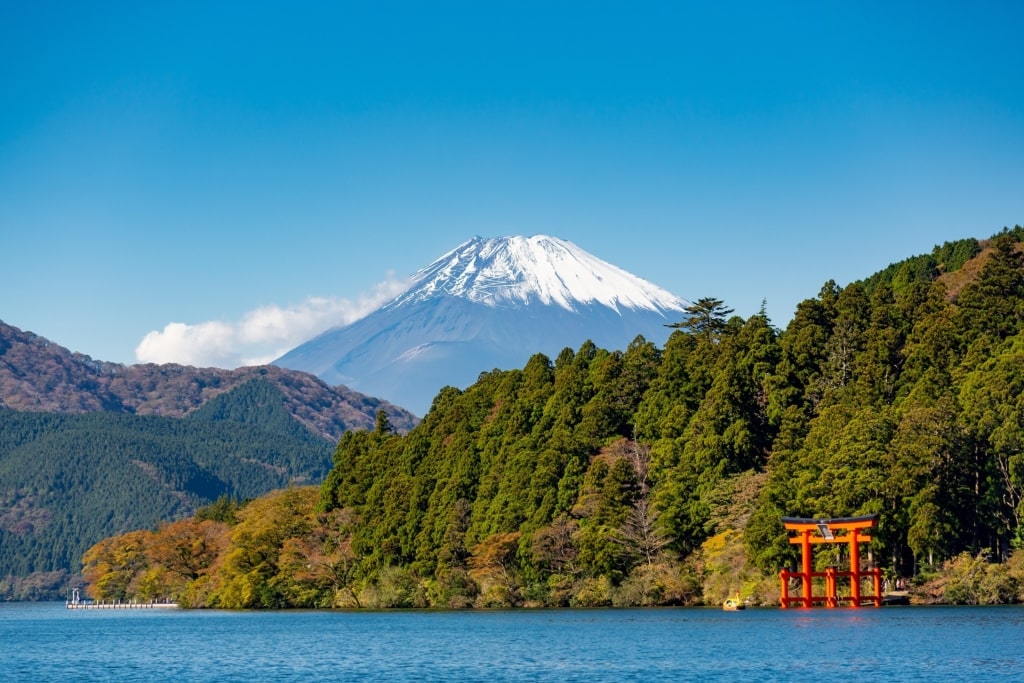
Lake Ashi, Hakone
Hakone is another mountainous town, known for its hot springs and beautiful views of Mount Fuji. Start by taking in an overview of the landscape and Lake Ashi from the scenic Hakone Ropeway.
Hakone Shrine is familiar from photos of its “floating” torii gate standing in Lake Ashi. Take a lake cruise in a replica pirate ship to see this and the view of Mount Fuji.
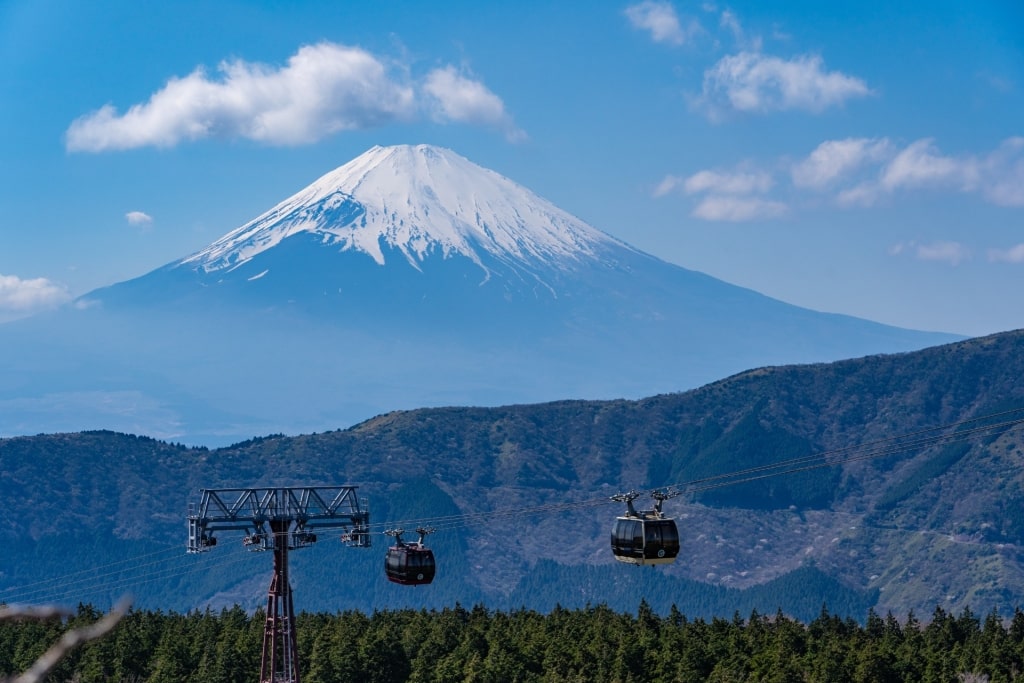
Hakone Ropeway
Another ropeway ride will take you to Owakudani, where you can eat black eggs cooked in the pungent sulfuric springs. Eating one is said to add seven years to your life.
The Hakone Open-Air Museum combines nature and art, with sculptures set against mountain views. There is more art at the Pola Museum of Art, with its impressive collection of European and Japanese works.
Another must-see is the ancient Cedar Avenue which takes you to the reconstructed Hakone Checkpoint. This was an important customs post in the Edo period from 1603 to 1867.
Nikko
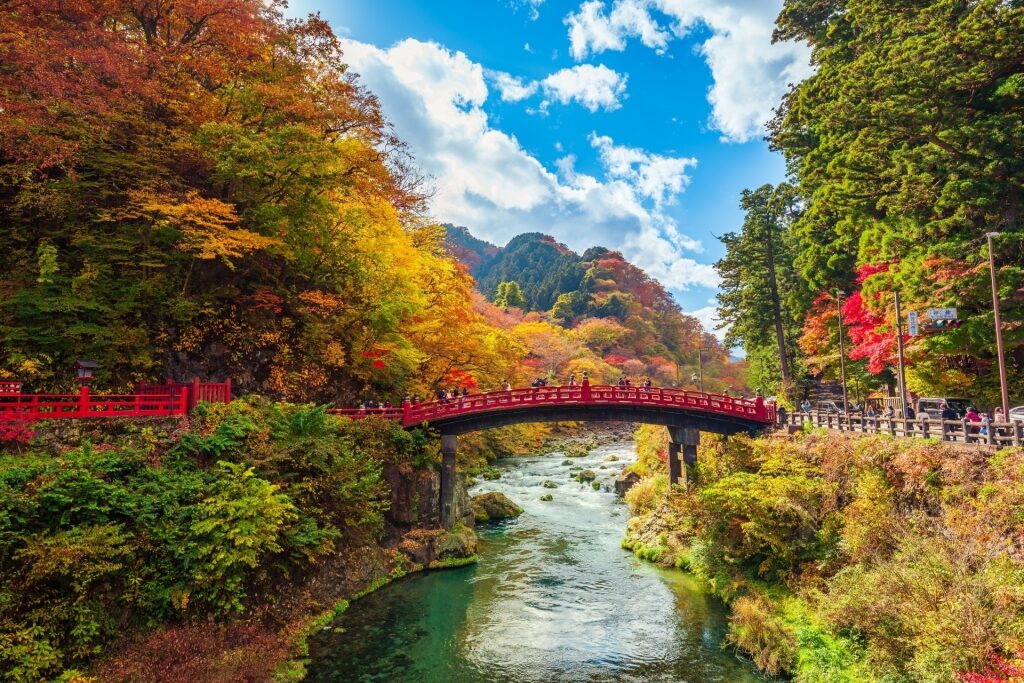
Shinkyo Bridge, Nikko
Nikko is UNESCO-listed for its lavish shrines and temples standing amid beautiful mountains. The shrines are reached across the sacred Shinkyo Bridge, brilliant with red lacquer.
The most famous is Toshogu Shrine, full of intricate wood carving, decorated with gold leaf. You’ll also want to see its “See No Evil, Speak No Evil, Hear No Evil” monkey carvings.
The Kanmangafuchi Abyss is a must-see for its line of stone Jizo statues wearing their photogenic red crocheted caps. The gorge leads to the Tamozawa Imperial Villa, which showcases Edo and early modern Meiji architecture.
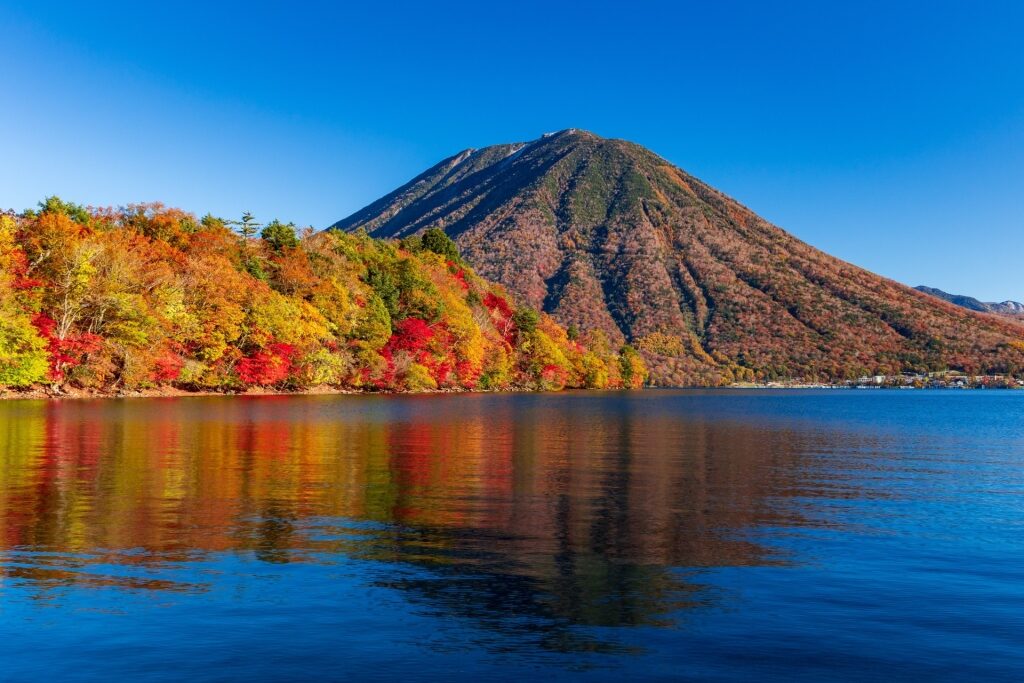
Lake Chuzenji, Nikko
Nature lovers will enjoy the scenic Lake Chuzenji, formed by an ancient volcanic eruption. The 320-feet-tall Kegon Falls is considered one of Japan’s three most beautiful waterfalls.
An unusual attraction in Nikko is Edo Wonderland, a cultural theme park. It features attractions such as a Ninja show and traditional archery, and you can dress up in costume to join the fun.
Mt. Takao
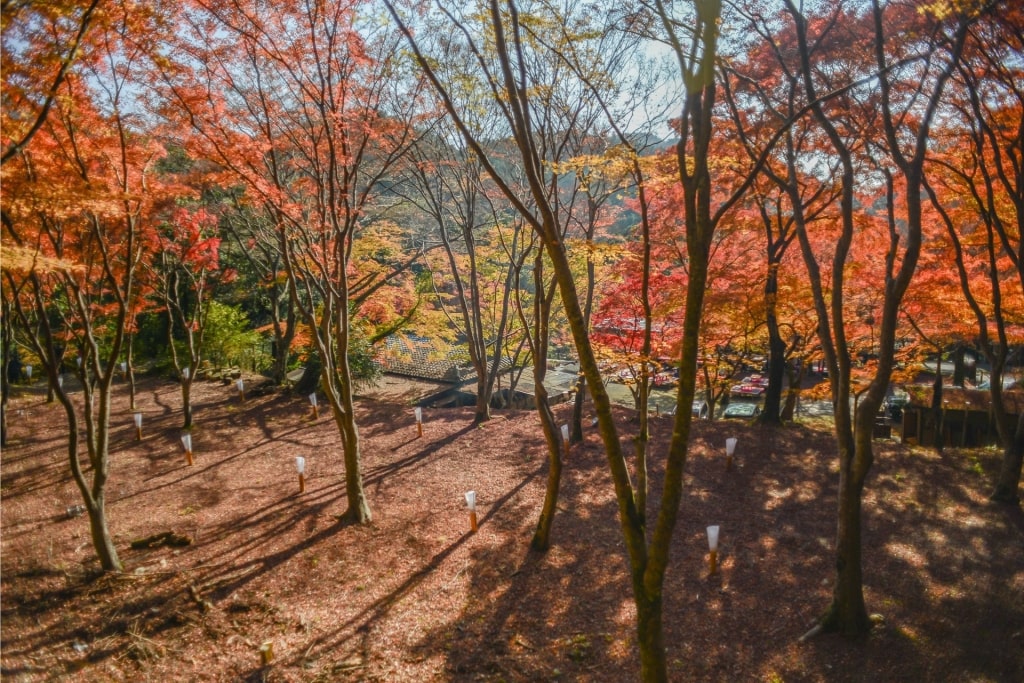
Mt. Takao
At almost 2,000 feet, Mount Takao is a popular hiking spot for Tokyo residents. This is one of the best day trips from Tokyo if you enjoy outdoor living. Even better, a chair lift or cable car will take you halfway up to start your hike.
Near the summit is Yakuo-in, a Buddhist temple dedicated to the practice of shugendo, or mountain asceticism. It’s also devoted to Tengu, a mythical goblin-like figure from Shintoism thought to be a messenger from the gods.
On clear days, the mountain has spectacular views of Tokyo and Mount Fuji. The area is also famous for its vibrant scenery during fall in Japan.
The Takao 599 Museum at the base of the mountain is a good place to learn more about the area’s flora, fauna, and culture. There are also plenty of onsen baths for easing any muscles tired after your hike.
The local specialty here is tororo soba—noodles with grated yam. You’ll find it in many restaurants around the mountain.
Yokosuka
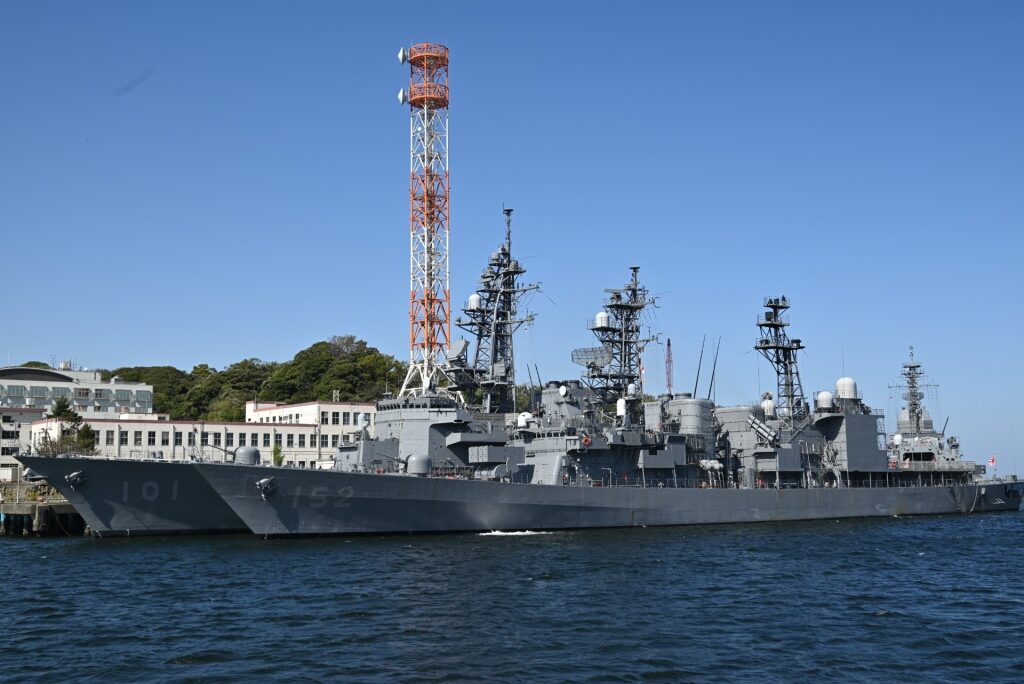
Yokosuka
Yokosuka is home to a large U.S. Navy base, giving an American feel to many parts of this lively port city. It’s also the birthplace of the “Navy Curry”, a Japanese version of the popular British Royal Navy dish.
You can taste this, and the equally famous “Yokosuka Burger” on Dobuita Street which caters to large numbers of U.S. Navy personnel. It’s also notable for its vintage cloth shops and military-themed fashion.
The Museum of History explains some of Yokosuka’s naval past. In Mikasa Park, you can visit the restored battleship Mikasa which played a key role in the Russo-Japanese War of 1904-1905.
Contemplate modern and contemporary art at the Yokosuka Museum of Art. The building itself is a work of art, making the most of natural light and the sea view.
The museum sits within Kannonzaki Park, which has hiking trails, tidal pools, and an amazing roller slide. It’s named for Kannonzaki, built in 1868 as Japan’s first western-style lighthouse.
Kawasaki
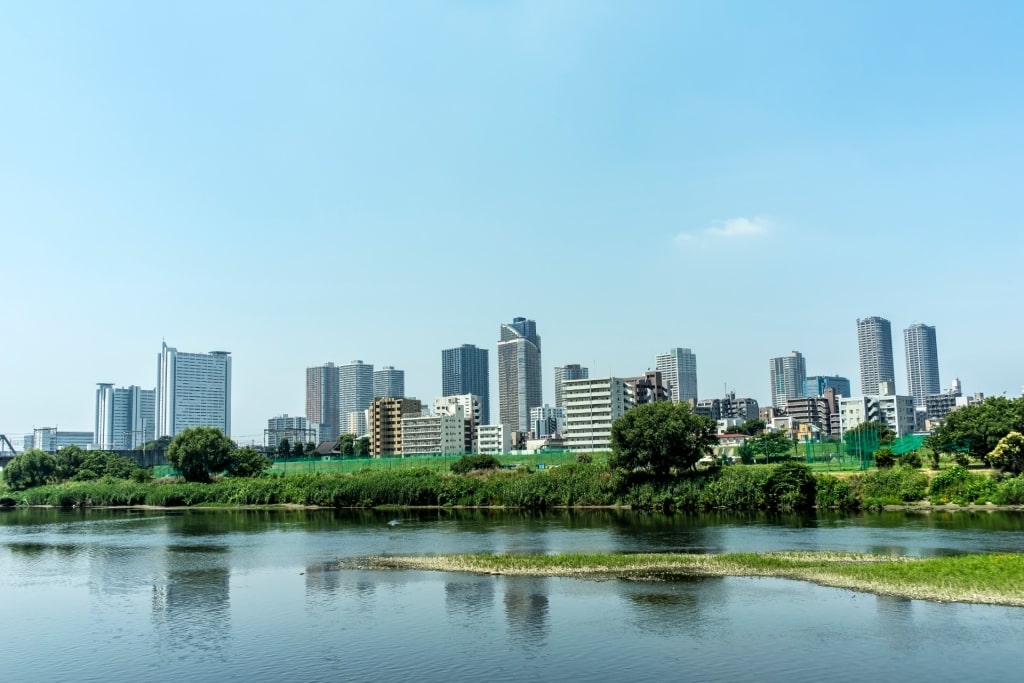
Kawasaki
The industrial city of Kawasaki on Tokyo Bay was central to Japan’s industrial boom after World War II. In more recent years, it is reinventing its waterfront area with shopping malls, entertainment, and green spaces.
You can see this in Kanagawa’s Ikuta Ryokuchi Park, which has views of Mount Fuji. It also houses Nihon Minka-en, an open-air museum with 20 traditional Japanese farmhouses.
Other key attractions in Kawasaki include the Toshiba Science Museum, which deals with the history of Japanese technology. The Kawasaki Municipal Science Museum is famous for its Planetarium.
Warehouse Kawasaki is a unique five-story arcade designed to look like Hong Kong’s ancient Kowloon Walled City. Inside this cyberpunk paradise, you’ll find retro games as well as the very latest ones.
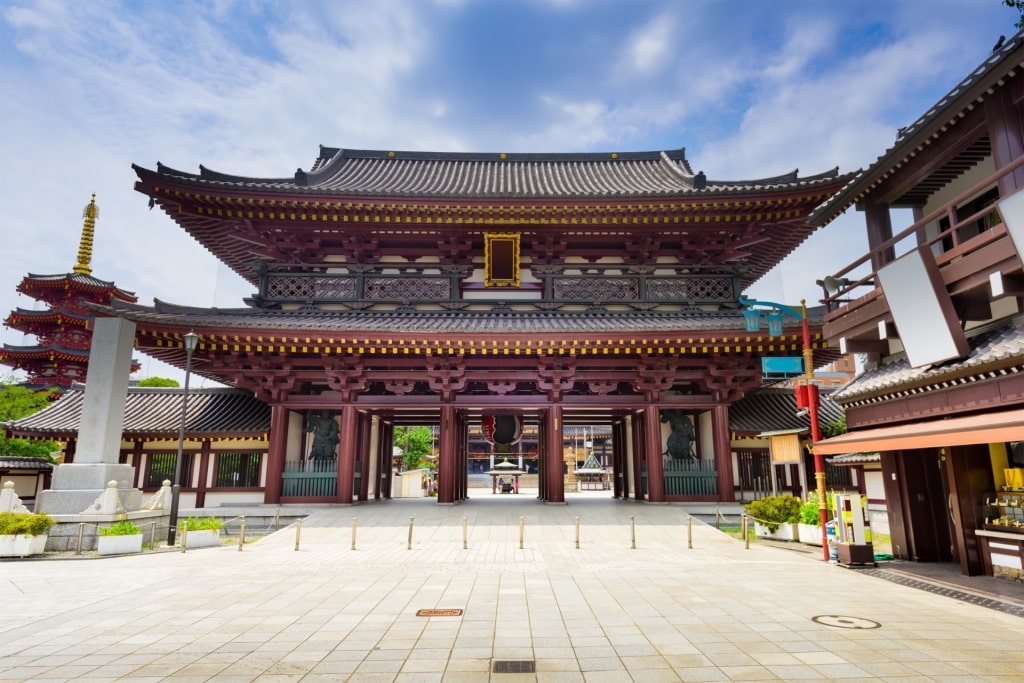
Kawasaki Daishi
In contrast, Kawasaki Daishi is one of the most important Buddhist temples in the region. Its daily “rite of burning” is a ritual for everything from business success to having your car blessed for safety.
Read: Three Days in Tokyo
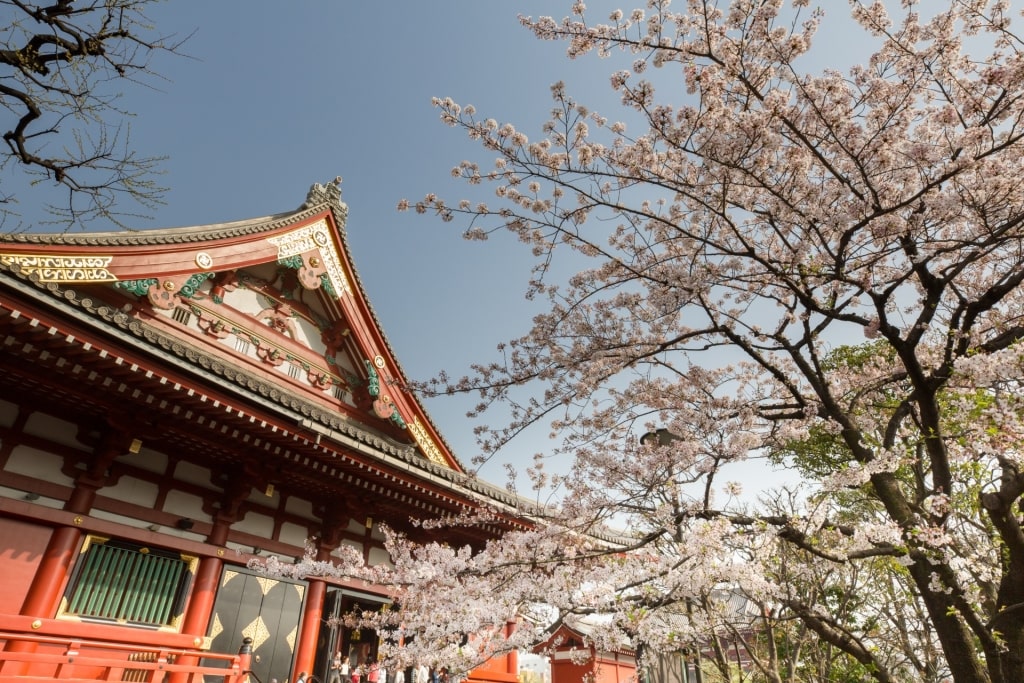
Sensō-ji Temple, Tokyo
Are you inspired to explore beyond Tokyo? Browse Celebrity’s cruises to Tokyo and book your next getaway to Japan.
